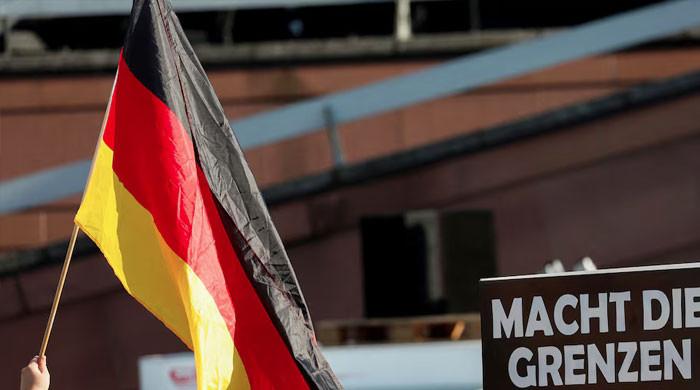The universally known traffic light has not undergone a significant redesign in nearly 100 years, since William Pott, a Detroit police officer, created the first three-section traffic light in the United States in 1921. Now, experts say, the rise of Driverless cars mean that a new set of safety guidelines is needed to ensure they interact correctly with traffic signals.
Traffic lights around the world typically use red, amber, and green lights to tell drivers whether to stop, go, or prepare to stop or go at intersections and crosswalks. Ali Hajbabaie, an engineering professor at North Carolina State University (NCSU), is leading a team to design a traffic system that considers how driverless vehicles respond to traffic signals.
Hajbabaie told The Associated Press news agency that he proposes adding another light, possibly a white one.
Traffic signs are more than just safety. They allow better traffic flow, leading to less congestion, and can also be beneficial to the economy when people waste less time and fuel on the roads.
According to the Global Traffic Scorecard 2022 from INRIX, a company that creates products and services related to the transportation industry and autonomous vehicles, the combined cost to the economy of road congestion in the United Kingdom, Germany and the United States was 2.2 billion of dollars. Traffic lights contribute significantly to keeping this cost down.
But what else can we learn from the past to inform the future?
When was the traffic light invented?
The world's first traffic light was installed in Parliament Square, opposite the Houses of Parliament in London, United Kingdom, on December 10, 1868.
The increasing congestion of horse-drawn carriages at that specific intersection made it increasingly dangerous for pedestrians in the area.
The semaphore installation consisted of a pillar whose upper part resembled a cross. It had traffic light signaling arms, which moved up and down to signal traffic to move or stop, and red or green gas lights.
Designed to replicate the gestures of a traffic police officer, traffic was to stop when both arms were perpendicular and move forward when they were at a 45-degree angle. Red and green gas lamps were used at night.
Based on a railway signaling system, it required a police officer to operate. Gas was introduced into the mechanism from a pipe dug into the ground to power the lights.

Unfortunately, the first traffic light design got off to a rocky start. A gas leak in the supply pipe underneath caused an explosion in the traffic light mechanism, injuring the police officer operating it.
Considered a safety hazard, the traffic light was quickly removed and banned entirely for the next 60 years. They finally returned to British streets in 1929, following the invention in 1921 of the three-light signaling system in Detroit.
The first electrically powered traffic lights were invented in 1923 by African-American inventor Garrett Morgan. He eventually sold his design to General Electric for $40,000 ($730,000 in today's money, adjusted for inflation).

Why are traffic lights red, amber and green?
The first color system used in traffic signal systems was based on the navigation light system used on ships at sea.
By using red and green lights, crews of approaching ships can instantly know which direction the ship is traveling. This lighting system served as an early collision prevention system, especially at night in low visibility conditions.
The amber light used in modern traffic lights was not introduced until 1921, when inventor William Potts brought the three-color traffic light to Detroit.
This innovation added a yellow “caution” light to the existing red and green signals, indicating to motorists that the lights were about to change and alerting them to slow down. The first four-way, three-color traffic light was installed at the intersection of Woodward Avenue and Fort Street in Detroit in 1921, and by the mid-1930s this standard had become widespread nationwide.
Why do we need a fourth color now?
Humans and self-driving cars use different sets of visual cues when it comes to interpreting lighting systems. Different colors (sometimes flashing to indicate that a change is imminent) work best for the human brain, while a single light works best for self-driving cars.
Therefore, a fourth light, probably white, would be added for the benefit of autonomous vehicles. The white light would be interpreted by a self-driving car as an instruction to “go ahead unless otherwise instructed.”
Hajbabaie, the NCSU professor, explained: “If the white light is active, simply follow the vehicle in front of you.”

What different types of traffic light systems are there?
Although there are several types of traffic signal technology, most traffic systems fall into two categories: traffic signals that operate on a fixed schedule; and traffic signals that can adjust timing based on traffic volume.
Some different models of traffic signs are:
- Fixed-time traffic signs: not based on traffic volume. The traffic planner sets the timing of each set of lights based on a general investigation that will move traffic forward at a predetermined time.
- Sensing traffic signals: Also known as “activated traffic signals,” they work with roadside-embedded devices that detect the presence and volume of vehicles waiting at an intersection and then synchronize with the traffic signal, indicating when traffic must move or stop.
- Split Cycle Travel Optimization Technique (SCOOT): This traffic management system aims to optimize traffic volume at intersections using real-time traffic data. SCOOT automatically adjusts the light sequence based on data collected from traffic signs. This helps reduce congestion and improve traffic flow.
- Pedestrian-activated traffic signals: Activated by a button or hand-held sensor that identifies a pedestrian in the crossing and changes the lights to stop traffic.

Could AI be used in traffic systems?
Henry Liu, a civil engineering professor at the University of Michigan, has come up with a different approach to solving traffic congestion problems using artificial intelligence (AI).
Having won a $15 million grant to establish the Center for Connected and Automated Transportation from the US Department of Transportation in February last year, Liu and his team are testing how traffic lights could be signaled using speed data and real-time location of Global Positioning System (GPS)-equipped cars in the Detroit suburb of Birmingham.
This particular neighborhood of Detroit was chosen because Birmingham's 34 traffic lights depend on a fixed schedule. They do not receive information from cameras or sensors to adjust to the flow of traffic, which means they can adapt to receive information only from cars, Liu explained, without any interference.












